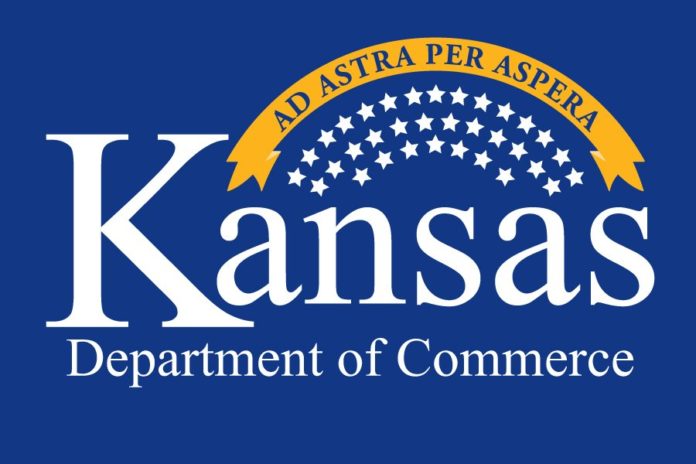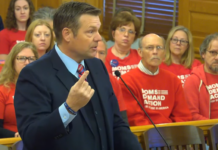(Updated to reflect that no rural opportunity zone county had an population increase bigger than 2.5%)
Almost a decade ago, experts warned that using tax incentives and student loan subsidies to attract people to rural Kansas might not work.
On Tuesday, a new state report showed it hasn’t.
State commerce officials released their review of the state’s Rural Opportunity Zone program, started in 2012 under former Gov. Sam Brownback’s administration.
The program offers a mix of tax cuts and student loan assistance – at a cost of about $14 million – as a way of stanching the loss of population in rural Kansas.
The incentives are available to people relocating to one of 77 rural counties, many that suffered significant population losses.
The study found that the population increased in just seven of the 77 counties where the tax incentives are available.
In the seven counties that saw population increases — Scott, Logan, Kiowa, Sheridan, Gray, Anderson and Linn — no increase was bigger than 2.5%, the report showed.
The study also concluded that incentives are not influencing where people decide to live.
Of the 522 people who have received student loan subsidies, only 155 moved to Kansas from out of state. Most of the participants moved from one county to another.
The Commerce Department surveyed 522 people who have received the student loan subsidies.
Eighty-three percent said they would have moved to their county of residence regardless of the financial incentives. About 70 percent said the incentives were not the reason they stayed in Kansas.
“I think it’s clear that the current version of (rural opportunity zones) has not met its intended goal of increasing the population of rural counties,” Commerce Secretary David Toland told a legislative committee.
“We see it in how many people we were able to attract from out of state, how many counties have found success with it versus the many who have not, and lastly see it in how it has or has not influenced decision-making by those who have used it.”
Toland said the incentives were implemented with the best of intensions, trying to find a novel way to reverse declining population in rural Kansas. He described it as essentially a pilot program to see what might work to stem rural population decline.
“Despite our best intentions, I believe enough time has passed for the program that started in 2012 to show whether (it) was the difference-maker in addressing population decline. It simply has not succeeded in that.”
“I don’t want to indict how our state has tried to approach this problem in the past,” he said. “We’ve all been trying to address this issue, and that is admirable and important and we need to continue in that.”
The program allows the state to join with eligible counties or participating employers within them to repay 20 percent of an outstanding student loan — up to $3,000 a year for five years — for college graduates who moved to one of those eligible counties, whether they were from outside the state or not.
It also waives Kansas income taxes for five years for someone who moved to one of the 77 counties if they had lived outside the state for five years.
The tax waivers have cost the state about $8 million since 2012, growing from 98 filers and about $236,000 in 2012 to 500 filers and about $1.9 million in 2018.
The state had received 3,854 applications for the student-loan component of the program since it started eight years ago.
There have been 1,724 participants in the program, and there are currently 517 still receiving student loan payments in fiscal year 2020.
Since the program started, the state has paid out about $5.7 million in student loan relief, the Commerce Department said.
Republican state Rep. Don Hineman, who last year chaired a committee examining rural revitalization, said lawmakers expected that incentives might not influence where some people decided to relocate.
He conceded the study showed the incentives might have had less of an impact than what legislators originally believed when it was created.
But he said the program is seen as a valuable recruitment tool in some counties and should not just be quickly ended.
“We need to be careful to not just throw away the entire program if it’s working in at least a limited capacity to provide more of a trained workforce,” he said.
When the program started eight years ago, demographers were skeptical about whether people would move to rural Kansas because of incentives.
“I have a hard time seeing this as being immediately persuasive in setting in motion a large population movement,” Brown University demographer Mike White told The Kansas City Star in 2011.
Census data show that people are more inclined to move for family- and employment related reasons.
Out of the 24.8 million people who moved from 2018 to 2019, 11.9 million said it was because of family or work, Census data show. Another 9.6 million moved for housing-related reasons, the data show.
About 3.1 million moved citing health, change of climate or a natural disaster, among other things, the data showed.
Laszlo Kulcsar, former head of the sociology department at Kansas State who is now at Penn State University, was even more pointed in his doubt about the program.
“People simply do not make migration decisions based on income tax issues,” he told The Star in 2011.
Toland said the state needs a menu of options suited to each county’s needs. The only option available to rural counties now are the rural opportunity zones, he said.
The report noted that there have been several programs such as Kansas Main Street that have been eliminated or cut back because of the rural opportunity zones.
“What we need going forward is a set of community-driven, community-developed solutions that reflect the uniqueness of Kansas counties,” he said.
“What we need is the flexibility to offer unique county-by-county solutions instead of a one-size-fits-all approach, which is what (the rural opportunity zones) have been.”
















